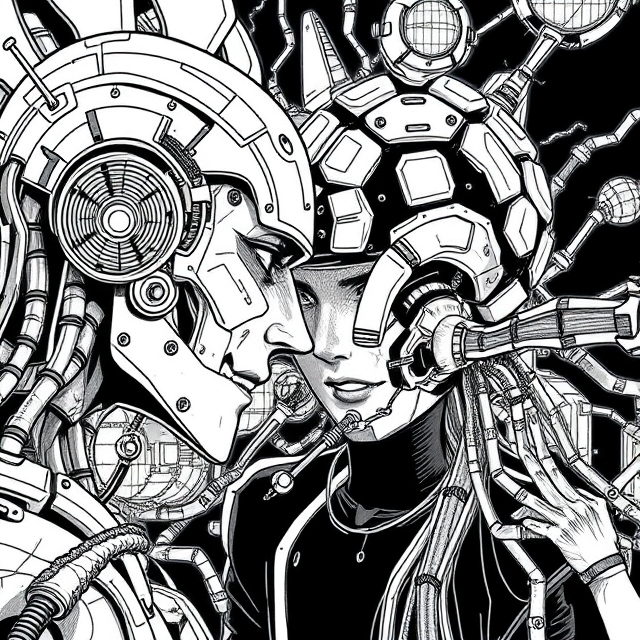
Basic Algorithm AI vs. Plain Model AI - A Deep Dive Comparison
Artificial Intelligence (AI) has seen immense growth in recent years, from traditional algorithmic models to the more complex deep learning and machine learning approaches. While basic algorithm AI often refers to simpler, handcrafted rules and heuristics, plain model AI typically involves learning-based techniques like neural networks, deep learning, and machine learning. Both approaches have their own merits, and understanding when to use one over the other can make a significant difference in AI system performance and application.
This detailed comparison explores the key distinctions, advantages, and challenges of basic algorithmic AI and plain model AI, with a focus on modern AI engineering practices.
Key Comparison Table
| Feature | Basic Algorithm AI | Plain Model AI (Deep Learning, Neural Networks, ML) |
|---|---|---|
| Core Approach | Rule-based, heuristic-driven | Data-driven, learning-based |
| Data Dependency | Low or no data dependency | High data dependency for training |
| Model Complexity | Simple, interpretable | Complex, often a “black box” |
| Training Requirement | No formal training, uses predefined rules | Requires large datasets and computational power |
| Performance in Complex Scenarios | Limited in handling ambiguity | Excels in handling complex, ambiguous data |
| Speed and Efficiency | Fast inference with low computational cost | Slower inference, but can handle more dynamic tasks |
| Use Case | Well-suited for structured, deterministic problems | Best for tasks involving large datasets and non-linear patterns |
| Interpretability | High, easy to understand and debug | Often low, difficult to interpret results |
| Adaptability to New Data | Low, needs manual adjustments | High, models adapt and improve as more data is added |
| Generalization Ability | Limited to predefined rules | Strong generalization with learned patterns |
Basic Algorithm AI: Simplicity and Control
1. Rule-Based Systems and Heuristics
Basic algorithm AI is rooted in hand-crafted rules and heuristics. These systems are explicitly programmed to perform tasks based on logic, decision trees, or finite state machines, rather than learning from data. Basic algorithm AI can be effective for solving well-defined problems where all conditions and possible outcomes are known.
“Rule-based systems are great for tasks where domain knowledge is well understood and can be explicitly programmed. The rules are clear and reliable.” – Senior AI Developer in Finance
Examples of basic algorithm AI include:
- Expert Systems: Systems that emulate the decision-making ability of a human expert based on predefined rules.
- Search Algorithms: Techniques like depth-first search (DFS), breadth-first search (BFS), or A* for pathfinding and optimization problems.
- Sorting and Searching Algorithms: Algorithms like quicksort, binary search, etc.
2. Performance and Efficiency
One of the strongest advantages of basic algorithm AI is its speed and computational efficiency. Since no training or extensive data manipulation is involved, these algorithms often perform inference tasks with low computational cost.
“For applications with limited computational resources, such as embedded systems or robotics, algorithmic AI can offer fast decision-making without the need for heavy training.” – AI Engineer in Robotics
3. Limitation in Complex and Dynamic Environments
Basic algorithmic AI tends to struggle with handling unstructured or ambiguous data. For example, in image recognition, the system would need a set of predefined rules to handle each possible scenario, which is impractical. Thus, rule-based systems are most suitable for deterministic, structured environments with a clear set of rules.
NOTEBasic algorithm AI excels in scenarios where all possible inputs and behaviors can be known ahead of time. It remains highly effective for domains like chess, scheduling systems, or sorting tasks.
Plain Model AI: Deep Learning, Neural Networks, and Machine Learning
1. Learning-Based Approach
Driven by machine learning (ML) and deep learning (DL), is a data-driven approach where the system learns patterns from large datasets. Unlike basic algorithmic AI, plain model AI does not require explicit programming of rules but instead uses algorithms like decision trees, support vector machines (SVMs), and neural networks to learn from examples.
“Machine learning allows us to build systems that learn from data, adapting to new conditions without needing to be reprogrammed entirely.” – Data Scientist in AI Research
Key techniques include:
- Neural Networks: Inspired by biological neurons, these networks can model complex relationships and solve problems like image and speech recognition.
- Deep Learning: A subset of ML that uses large neural networks with many layers (deep networks) to model complex, high-dimensional data.
2. Data-Driven, Pattern Recognition
The power of plain model AI lies in its ability to learn patterns from large amounts of data. These models can handle a vast amount of variables, providing high accuracy and generalization for tasks like image classification, natural language processing, and autonomous driving.
“Deep learning has revolutionized fields like computer vision and natural language processing, where the complexity of the data demands a model that can understand intricate patterns.” – Senior Machine Learning Engineer
This ability to recognize patterns makes deep learning particularly useful for:
- Image Classification: Identifying objects or scenes in images.
- Natural Language Processing (NLP): Understanding and generating human language.
- Autonomous Systems: Allowing cars, drones, and robots to make decisions based on sensory inputs.
3. Training Overhead and Computational Complexity
While plain model AI (especially deep learning) delivers outstanding results in complex tasks, it requires vast amounts of data and computational resources for training. Training a neural network involves iterative adjustments to millions of parameters, and it can be computationally expensive and time-consuming.
“The real challenge with deep learning is the immense amount of data required for training and the high computational costs involved. We need specialized hardware, like GPUs, to accelerate training.” – AI Hardware Specialist
However, once trained, these models can provide excellent performance with real-time inference, making them effective for dynamic and large-scale environments.
IMPORTANTThe primary advantage of plain model AI is its ability to generalize. With the right dataset and training, machine learning models can adapt to novel situations without needing a complete redesign.
4. Use Cases for Plain Model AI
It is best suited for situations where the data is too large or complex for rule-based systems to handle effectively. Key areas where plain model AI outperforms basic algorithm AI include:
- Image and Speech Recognition
- Autonomous Vehicles
- Natural Language Understanding
- Predictive Analytics in Healthcare
- Financial Forecasting
5. Flexibility and Adaptability
It is highly adaptable to new data and can improve over time with additional training. This flexibility makes it ideal for tasks in unpredictable or constantly evolving environments.
TIPWhen dealing with large, unstructured data or complex problems, deep learning and neural networks should be preferred over traditional algorithmic methods.
When to Use Basic Algorithm AI vs. Plain Model AI
Basic Algorithm AI: Best For
- Well-defined problems with clear rules and outcomes: Games like chess, search algorithms, optimization tasks.
- Systems with low data availability: Where training data is scarce or expensive.
- High-performance environments with limited resources: Embedded systems, low-power devices, real-time systems.
- High interpretability is needed: When transparency in decision-making is crucial (e.g., medical expert systems).
Plain Model AI: Best For
- Large-scale, complex problems: Tasks involving large datasets with non-linear patterns like image recognition, NLP, or predictive modeling.
- Dynamic, evolving environments: Systems where continuous learning and adaptation are required (e.g., autonomous driving, stock market prediction).
- Generalization and flexibility: When the system needs to generalize across various inputs and handle unseen data.
NOTEFor applications involving complex, multi-dimensional data or those requiring the system to “learn” from experience, machine learning models, particularly deep learning, are the clear choice.
Conclusion: Which Approach is Best?
Ultimately, the choice between basic algorithm AI and plain model AI hinges on the problem at hand. If the problem is well-structured with clear rules, traditional algorithms offer simplicity, speed, and efficiency. However, for problems that require recognizing patterns in vast and complex data or where adaptability is critical, plain model AI — specifically deep learning — is indispensable.
“Choosing between basic algorithmic AI and machine learning depends on your data, resources, and application complexity. There’s no one-size-fits-all solution.” – Senior AI Researcher
“AI success isn’t about using the latest model—it’s about choosing the right approach for the problem.” – Senior AI Researcher
Both approaches have their place in modern AI development, and understanding their strengths and limitations will allow engineers to make the best decision for each use case.

